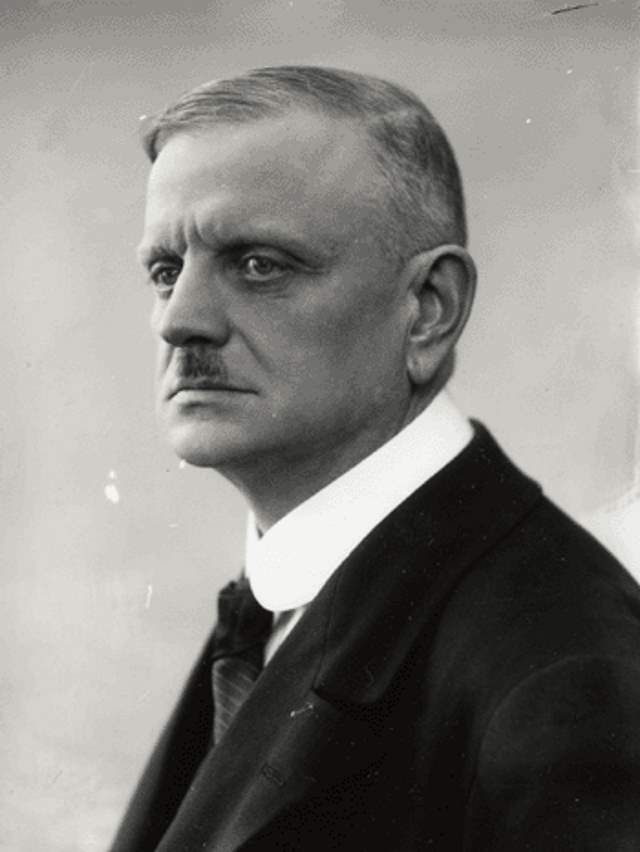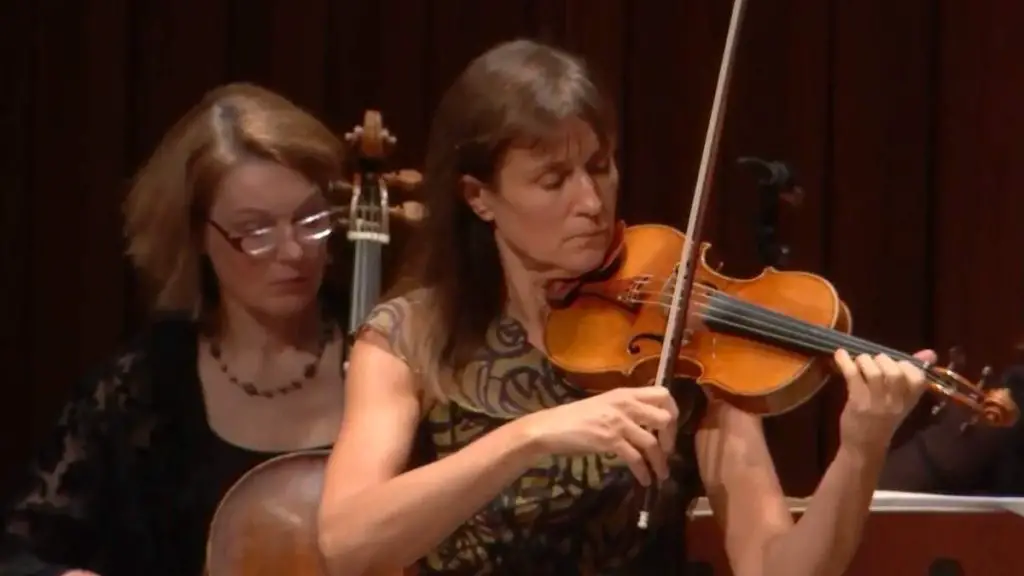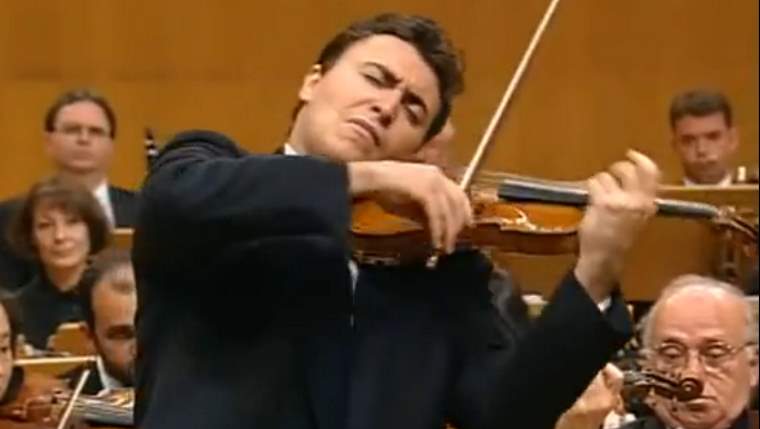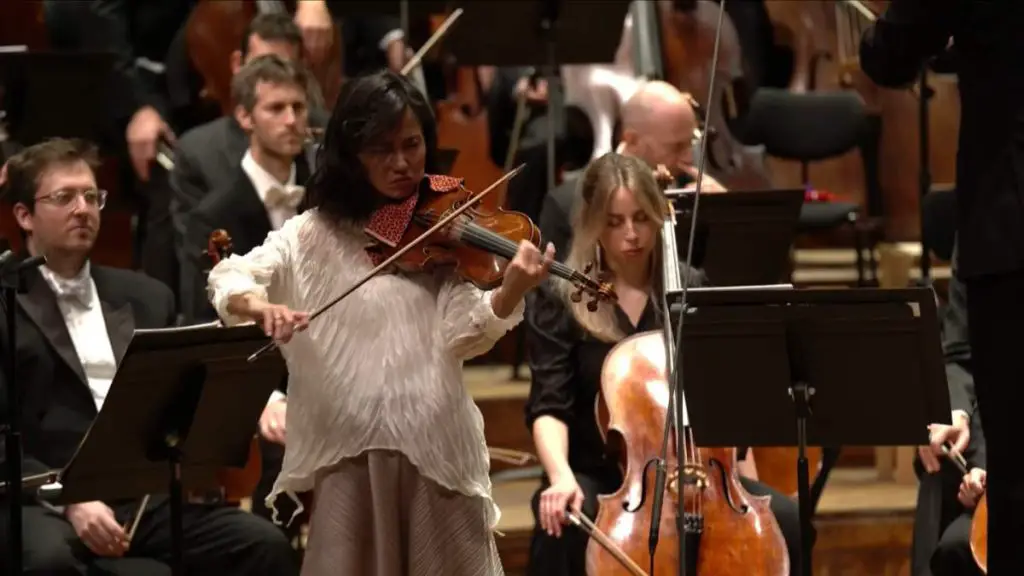Accompanied by the Finnish Radio Symphony Orchestra, Double first prize winner Viktoria Mullova performs Jean Sibelius’ Violin Concerto in D minor, Op. 47 at the 1980 Sibelius Violin Competition, Helsinki. Conductor: Jorma Panula.
Sibelius’ Violin Concerto in D minor, Op. 47
Jean Sibelius’s Violin Concerto in D minor, Op. 47, stands as one of the most profound and cherished works in the violin repertoire, blending the composer’s unique voice with the traditions of the concerto genre. Composed in 1904 and revised in 1905, this concerto is the only one Sibelius wrote for a solo instrument, and it embodies a deep connection between the lyrical and dramatic elements inherent in both the violin and the orchestral palette.
The concerto is noted for its emotional depth, technical demands, and the rich, Nordic landscape it evokes, reflecting Sibelius’s love for the natural beauty of his Finnish homeland. The work opens up vast, expressive spaces for the soloist, demanding not only virtuosity but also a profound interpretative insight to navigate its complex emotional and musical terrain. The interplay between the solo violin and the orchestra is masterfully handled, with Sibelius employing the orchestra not merely as a backdrop but as an active participant in the concerto’s narrative journey.

The piece is characterized by its dramatic contrasts, from the brooding, melancholic passages to the soaring, lyrical lines that showcase the violin’s expressive capabilities. Sibelius’s skillful orchestration ensures that the solo violin shines through the rich tapestry of the orchestral sound, creating moments of stunning beauty and intensity.
The concerto’s structure and thematic material reveal Sibelius’s deep connection to the Romantic tradition, yet the work also hints at the modernism that would come to define the 20th century. It is a work that straddles two worlds, rooted in the rich soil of Romanticism but reaching towards new horizons.
Sibelius’s Violin Concerto in D minor is more than a showcase for the violin; it is a deeply personal statement from a composer at the height of his powers. It remains a cornerstone of the violin repertoire, beloved by audiences and performers for its profound beauty, technical challenges, and emotional depth.
Movements
1. Allegro moderato
The first movement of Jean Sibelius’s Violin Concerto in D minor, Op. 47, marked “Allegro moderato,” is a profound exploration of contrast and emotion, seamlessly blending the technical virtuosity required by the soloist with the deep, introspective narrative that defines the piece. This movement is renowned for its dramatic opening, where a soft, brooding orchestral introduction sets the stage for the solo violin’s entry with a hauntingly beautiful and technically demanding melody.
Sibelius crafts a landscape that is at once vast and intimate, employing the solo violin to navigate through a series of lyrical passages, punctuated by moments of intense virtuosity. The movement is structured around a traditional sonata form, but Sibelius infuses it with his unique sense of musical storytelling, creating a rich tapestry of thematic development that is both innovative and deeply emotional.
The orchestration is masterful, with Sibelius using the orchestra to provide a lush, complex backdrop that complements and contrasts with the violin’s voice. The interplay between the soloist and orchestra is central to the movement’s narrative, with the orchestra sometimes supporting the violin in a tender embrace and at other times engaging in a more confrontational dialogue.
One of the hallmarks of this movement is its use of expansive, sweeping melodies that showcase the violin’s lyrical capabilities, juxtaposed with sections that demand technical prowess, including rapid scales, double stops, and arpeggios. These elements combine to create a movement that is as emotionally compelling as it is technically challenging.
The development section delves deeper into the movement’s thematic material, exploring a range of emotions and textures before leading into a recapitulation where the main themes are revisited and transformed. The movement concludes with a coda that revisits the opening themes, bringing the movement to a powerful and dramatic close.
2. Adagio di molto
The second movement of Jean Sibelius’s Violin Concerto in D minor, Op. 47, marked “Adagio di molto,” is a deeply lyrical and introspective passage that offers a stark contrast to the outer movements’ virtuosity and intensity. This movement unfolds as a serene, expansive meditation, showcasing the violin’s capacity for expressive, singing lines against a backdrop of rich, nuanced orchestration.
In this movement, Sibelius crafts a landscape of profound emotional depth, utilizing the solo violin to convey a sense of longing and melancholy. The violin’s melody is both simple and profoundly moving, floating above the gentle stirrings of the orchestra. The orchestral accompaniment is characterized by its restraint and subtlety, providing a delicate cushion that enhances the solo line’s poignant beauty without ever overwhelming it.
The “Adagio di molto” is notable for its melodic richness. The main theme, introduced by the solo violin, is one of the concerto’s most memorable, marked by its heartfelt quality and graceful phrasing. This theme is developed through the movement, with the violin weaving in and out of the orchestral texture, creating moments of intimate dialogue and reflection.
Sibelius’s use of harmony in this movement adds to its evocative atmosphere, with lush chords and unexpected modulations painting a sonic picture that is both vivid and dreamlike. The movement progresses with a sense of unhurried contemplation, building slowly to moments of greater intensity before returning to the tranquil mood that characterizes its opening.
The second movement serves as the emotional heart of the concerto, providing a moment of introspection and repose between the more dynamic first and third movements. It highlights Sibelius’s mastery of orchestration and his ability to create music of profound emotional resonance. The “Adagio di molto” is a testament to the power of simplicity and the depth of expression that can be achieved through the nuanced interplay of soloist and orchestra.
3. Allegro, ma non tanto
The third movement of Jean Sibelius’s Violin Concerto in D minor, Op. 47, marked “Allegro, ma non tanto,” serves as a vigorous and compelling finale to the concerto. This movement contrasts sharply with the introspective and serene second movement, bringing the work to a close with an energetic and rhythmic vitality that showcases the soloist’s virtuosity and the composer’s skill in orchestral writing.
Characterized by its brisk tempo and dynamic rhythmic drive, the movement opens with an assertive theme in the orchestra, setting the stage for the solo violin’s entrance. The violin part is immediately demanding, featuring rapid passages, intricate double stops, and soaring lines that require both technical precision and emotional intensity from the performer. Sibelius crafts a thrilling dialogue between the solo violin and the orchestra, with the soloist navigating through a series of technical challenges and expressive moments against the backdrop of the full orchestral texture.
The movement is structured around a rondo form, where the main theme returns several times, interspersed with contrasting sections. This allows Sibelius to explore a variety of moods and colors, from the assertive and bold to the lyrical and tender, all while maintaining a forward momentum that drives the movement towards its climax.
Sibelius’s orchestration in this finale is masterful, with the orchestra providing a rich and varied accompaniment that complements and enhances the solo violin’s part. The use of brass and percussion adds to the movement’s dramatic character, while the woodwinds and strings contribute layers of harmonic and melodic interest.
The movement builds to a thrilling conclusion, with the soloist and orchestra coming together in a final, triumphant statement of the main theme. This culminates in an exhilarating coda that brings the concerto to a powerful and satisfying close, leaving the audience with a sense of awe at the virtuosity and emotional depth of the work.
Viktoria Mullova
Viktoria Yurievna Mullova (born 27 November 1959) is a Russian violinist. She is best known for her performances and recordings of a number of violin concerti, compositions by Johann Sebastian Bach, and her innovative interpretations of popular and jazz compositions by Miles Davis, Duke Ellington, the Beatles, and others.
Mullova studied at the Central Music School of Moscow and the Moscow Conservatoire. Her extraordinary talent captured international attention when she won first prize at the 1980 Sibelius Competition in Helsinki and the Gold Medal at the Tchaikovsky Competition in 1982 which was followed, in 1983, by her dramatic and much-publicized defection to the West.
She has since appeared with most of the world’s greatest orchestras and conductors and at the major international festivals. She is now known the world over as a violinist of exceptional versatility and musical integrity. Her curiosity spans the breadth of musical development from baroque and classical right up to the most contemporary influences from the world of fusion and experimental music.

Her interest in the authentic approach has led to collaborations with period instrument bands such as the Orchestra of the Age of Enlightenment, Il Giardino Armonico, Venice Baroque Orchestra, and Orchestre Révolutionaire et Romantique. Viktoria has a great affinity with Bach, and his work makes up a large part of her recording catalog.
Her interpretations of Bach have been acclaimed worldwide and led Tim Ashley to write, “To hear Mullova play Bach is, simply, one of the greatest things you can experience…” in the Guardian. Her most recent disc of Bach Concerti with the Accademia Bizantina and Ottavio Dantone has been highly praised and her recording of Bach’s solo sonatas and partitas represents a significant milestone in Viktoria’s personal journey into this music. The recording received 5-star reviews from all over the world, and she has embarked on an international, several-season-long series of solo Bach recitals.
Her ventures into creative contemporary music started in 2000 with her album “Through the Looking Glass,” in which she played world, jazz, and pop music arranged for her by Matthew Barley. This exploration continued with her second album “The Peasant Girl,” which she has toured around the world with the Matthew Barley ensemble. This project shows a different side to Viktoria as she looks at her peasant roots in Ukraine and explores the influence of gypsy music on the classical and jazz genres in the 20th Century.
Her most recent project, “Stradivarius in Rio” is inspired by her love of Brazilian songs by composers such as Antonio Carlos Jobin, Caetano Veloso, and Claudio Nucci. A CD of the same name has been enthusiastically received and she is now presenting the project in planned concerts throughout Europe. As well as her own projects, she has also commissioned works from young composers such as Fraser Trainer, Thomas Larcher, and Dai Fujikura.
This rich musical diversity has been celebrated in several high-profile residences, including London’s Southbank, Vienna’s Konzerthaus, the Auditorium du Louvre in Paris, Musikfest Bremen, Barcelona Symphony Orchestra, and Helsinki Music Festival.
Highlights of her 15/16 season include a tour of Asia with the BBC Philharmonic and appearances with Orchestre de Paris, Netherlands Radio Philharmonic, London Symphony, Geneva Chamber Orchestra, and the Bergen Philharmonic amongst others. Viktoria will also give duo recitals with Katia Labèque throughout Europe and South America.
Mullova’s extensive discography for Philips Classics and Onyx Classics has attracted many prestigious awards. Her recording of the Vivaldi Concertos with Il Giardino Armonico, directed by Giovanni Antonini, won the Diapason d’Or of the Year award for 2005, and her recording featuring Beethoven’s Op 12 No 3 and Kreutzer Sonatas with Kristian Bezuidenhout won immense critical acclaim.
Other discs have included the Schubert Octet with the Mullova Ensemble, “Recital” with Katia Labèque, Bach Sonatas with Ottavio Dantone, and “6 Solo Sonatas and Partitas” by Johann Sebastian Bach. Mullova’s most recent all-Prokofiev disc (released in August 2015) has already received critical acclaim.
Viktoria either plays on her ‘Jules Falk’ 1723 Stradivarius or a Guadagnini violin.
Sources
- Viktoria Mullova on Wikipedia
- Viktoria Mullova’s official website
- Violin Concerto (Sibelius) on Wikipedia
- Violin Concerto, Op.47 (Sibelius, Jean) on the International Music Score Library Project website

![Sibelius: Violin Concerto [Hilary Hahn]](https://cdn-0.andantemoderato.com/wp-content/uploads/2022/09/Sibelius-Violin-Concerto-Hilary-Hahn-2010-1024x565.jpg)

